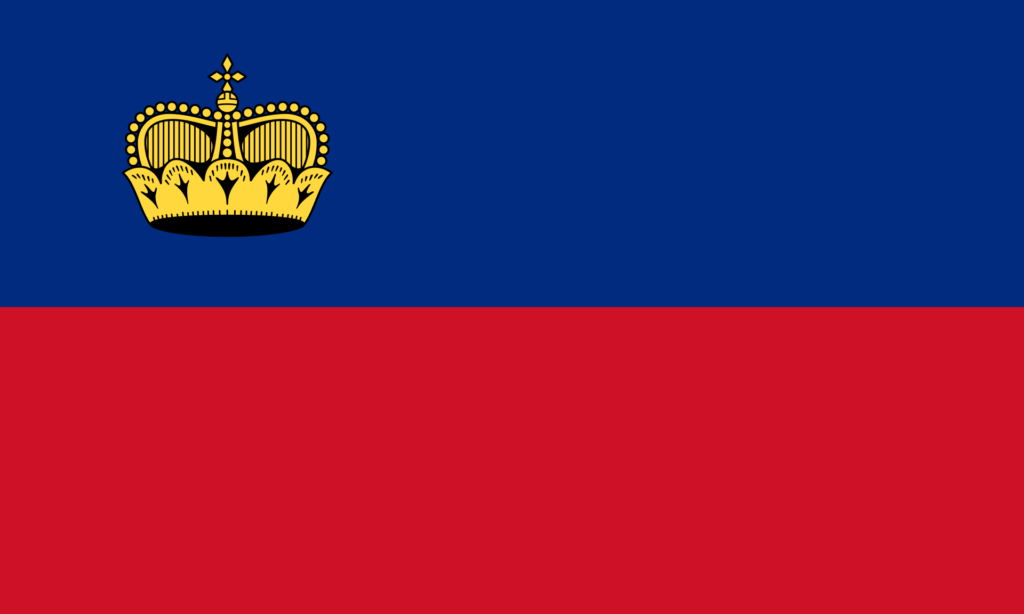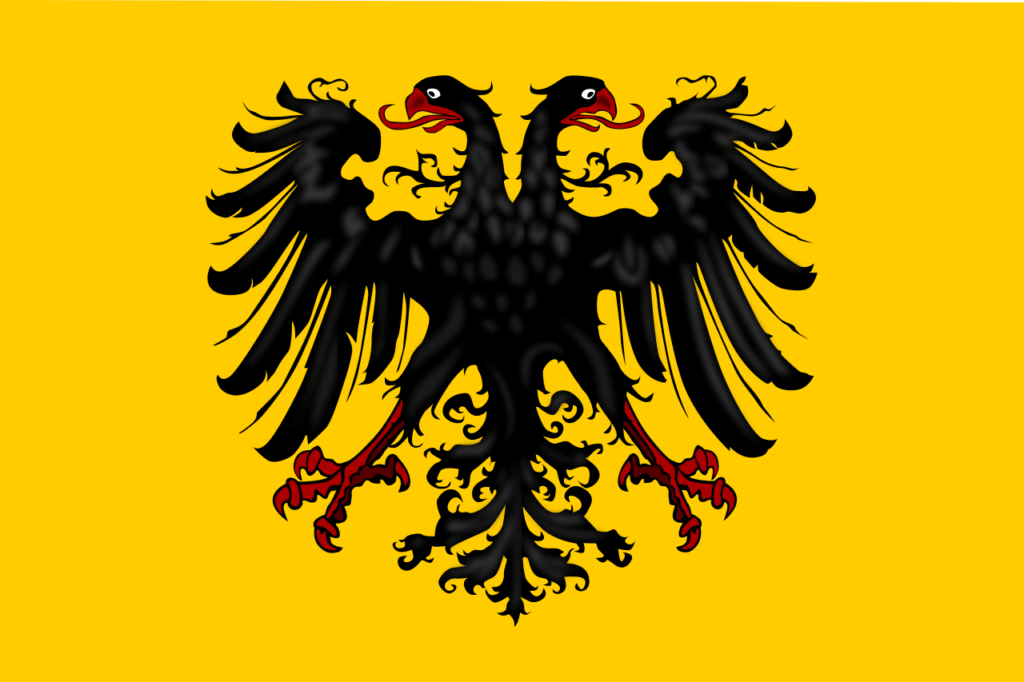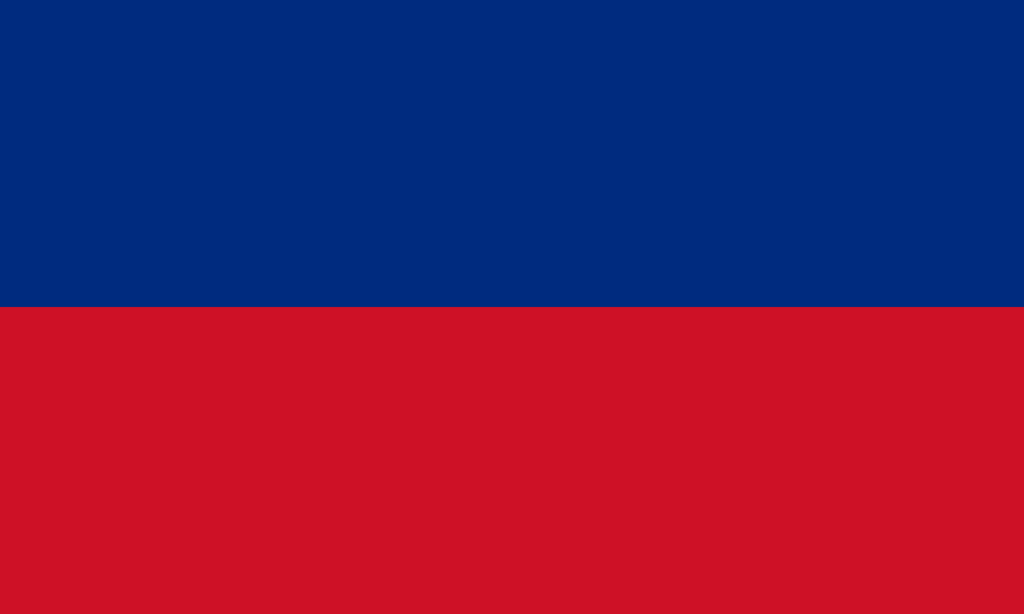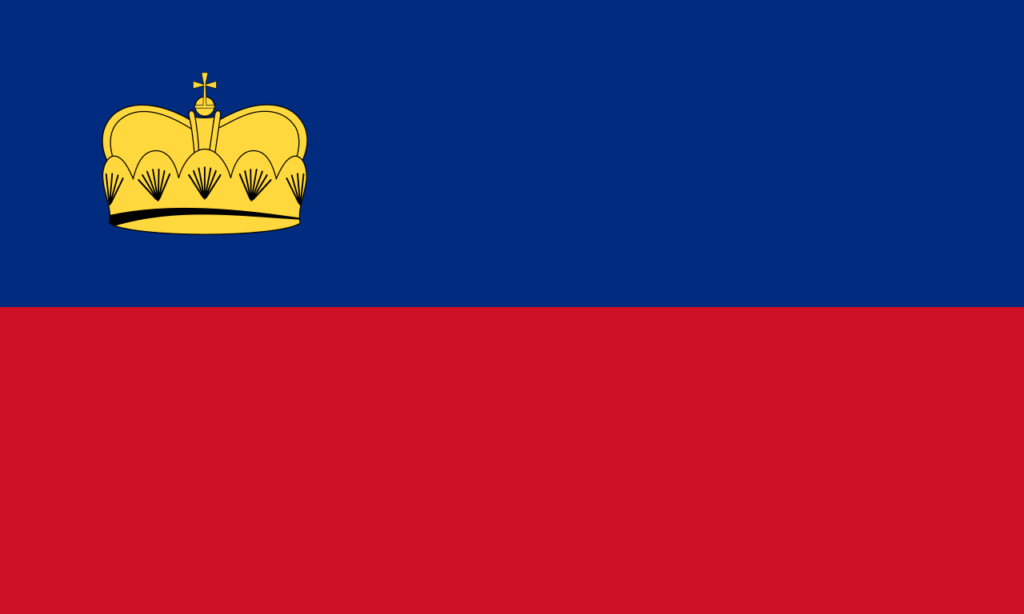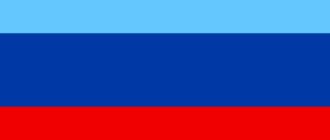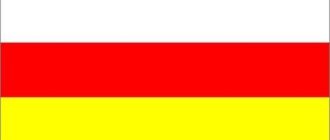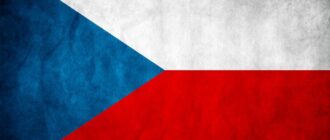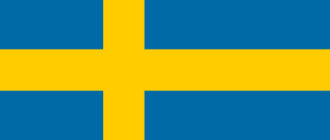Principality Liechtenstein – Dwarf Government located in the center of Europe, Austria, and Switzerland. Territory 160 km2, with a population of 38 thousand people.
So the modern flag of Liechtenstein looks:
History flag of Liechtenstein
The territory of Liechtenstein was part of the Holy Roman Empire of the German civilization without any rights. At that time, not having independence, the symbolism of the empire itself was used.
Principality of Liechtenstein as a sovereign subject, seemed in 1719, at the end of the recognition of this fact king. At this time step, the 2nd sign was adopted, folding from yellowish and red horizontal stripes.
With the collapse of the empire, the principality, first, stayed in the German alliance and used the 2nd view of the flag converted to the first half of the 19th century: vertical stripes of red and blue, at the end of which set-closer connections from the Austro-Hungarian Empire, after the end of the world, reoriented to Switzerland.
The last look of the panel existed until 1921 at the time, at the time, when the symbolism was again changed: blue and red horizontal stripes of uniform sizes.
In June 1937, the Crown was added to the princess flag of Liechtenstein.
During the Olympic Games of 1936, suddenly, Liechtenstein’s found a faithful similarity with symbols of the country of Haiti. Later, the country flag was supplemented with a crown image.
In 1982. There was a certain change in the crown design – the modern flag seemed.
Description
The Liechtenstein sign is a cloth of a rectangular shape of 2 main colors, which are in the form of uniform horizontal stripes: blue from above and red. Length and width correlate with each other in proportions of 3 to 5. In the upper left corner (having a ride) on the blue part, a golden prince of the crown is depicted. It was added to the flag in the 2nd half of the 30s of the twentieth century.
Colors flag of Liechtenstein
On the principality flag, two main colors are used: blue and red, which are in the symbolism of Liechtenstein used from the 17th century, at the time, at the time, when the country was part of the Sacred Roman Empire (1st Reich). In addition to primary colors, yellow and black for the image of the crown are applied.
Meaning colors and flag sign
- The blue color on the sign of Liechtenstein symbolizes radiant, unrequited sky over the principality and peace in the country.
- Red color – a symbol of beautiful remarkable sunsets, which can be seen in the mountains of Liechtenstein.
- The golden crown denotes the princely power, uniting the ruling family, the people, and the country into a single whole.
The red color on the sign of the country has the 2nd explanation – this is the color of the coils smoldering in the fireplace, which is interpreted as a symbol of heat, comfort and well-being.
Non-specialized information about Liechtenstein
| Official language | German |
| Capital | Vaduz |
| Territory | 160 km2 |
| Population | 38 013 people |
| Currency | Swiss frank |
| Telephone code | +423 |
